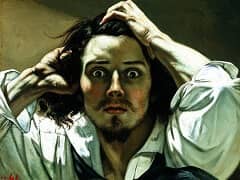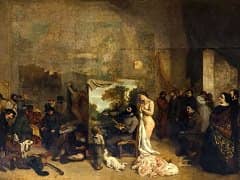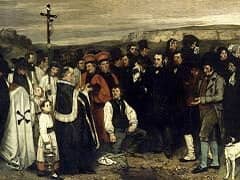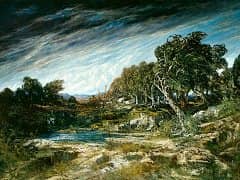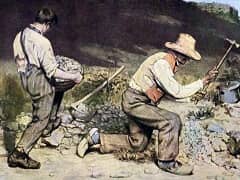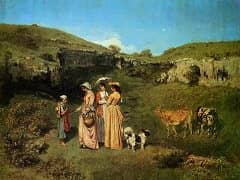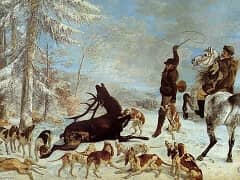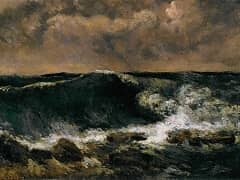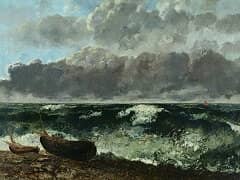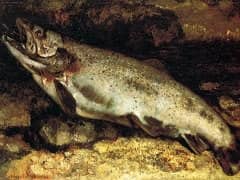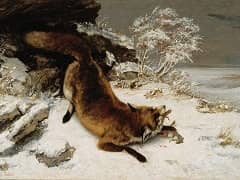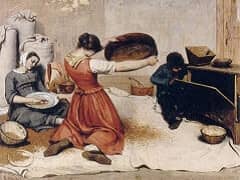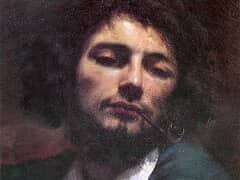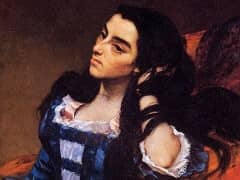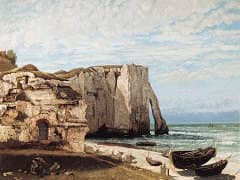Hunter on Horseback Redcovering the Trail, 1864 by Gustave Courbet
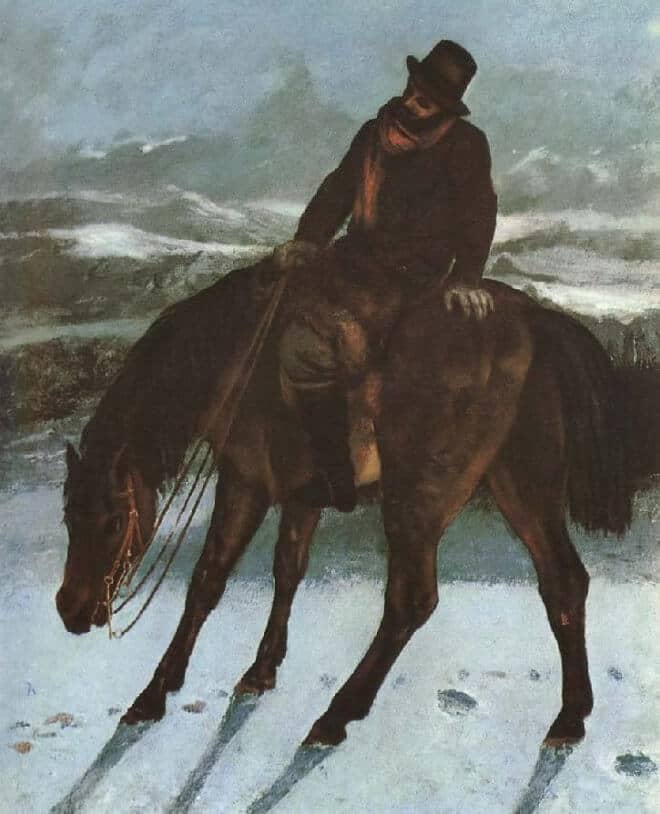
Hunter on Horseback is not a finished painting - despite its size Courbet listed it under "studies and sketches" in the catalogue of his 1867 exhibition - but it is a complete and striking image. Both works represent pictorial ideas that only Courbet would have conceived: the modern Venus, discarding the suave femininity of Neoclassicism to conquer the sea under her own steam; and in a minor key, the male hunter, no victor with his trophy but a man unsure of his way, a man who does not control his animal but is fused with him and depends upon him to find the path. The paintings run counter to the active stylistic and gender conventions of Courbet's time; and in our own day they have not lost the power to critique the stereotypes that yet remain.
In Hunter on Horseback, the stark triangular form of the man/horse is centrally placed so as to fill the whole field of the snowy, mountainous landscape. The fact that the pigments have darkened and sunk into the canvas in the lower part of the man's body blurs the distinction between man and horse. But even without this fortuitous effect, the two would be seen as essentially part of one overarching shape, in effect as one creature. The man is identified with the animal, who is helping him to recover his way. This is a country hunter, in soft hat and old clothes, far from the decorative splendor of the hunt undertaken as aristocratic sport. The figure of the horseman is generally accepted as a self-portrait, akin to that of the meditative central figure in The Quarry. The twist of the body with the hand placed affectionately on the horse's flank, the angle of the head with its gaze of poignant melancholy, combine to produce an image that shows an aspect of the artist's psyche quite at odds with the boisterous stereotype created by critics and caricaturists. In his early self-portraits Courbet presented his youthful self in different roles, such as a musician or as a personification of panic. In his maturity the self-image ceases to be a type and becomes instead his own figure as "real allegory" embodying complex meanings. When he appears as a painter, as in The Meeting and The Artist's Studio, the image is one of power and confidence in the importance of the kind of art he is making. The hunt paintings introduce an ambivalence born of the tension between grandeur and violence implicit in the act of hunting and killing animals that are respected and admired. Depicted in the paintings, Courbet as hunter is a figure of introspection, uncertainty, and self-doubt - experiences which he did not show directly to the world. This does not mean that he was simply confident about his art and equivocal about hunting, but rather that the hunter image itself provided a means of figuring these darker, troubled feelings. In Hunter on Horseback the touches of red paint on the white make it clear that the lost way will be recovered through a trail of blood; the painter/hunter both accepts and mourns the fatality of nature.

